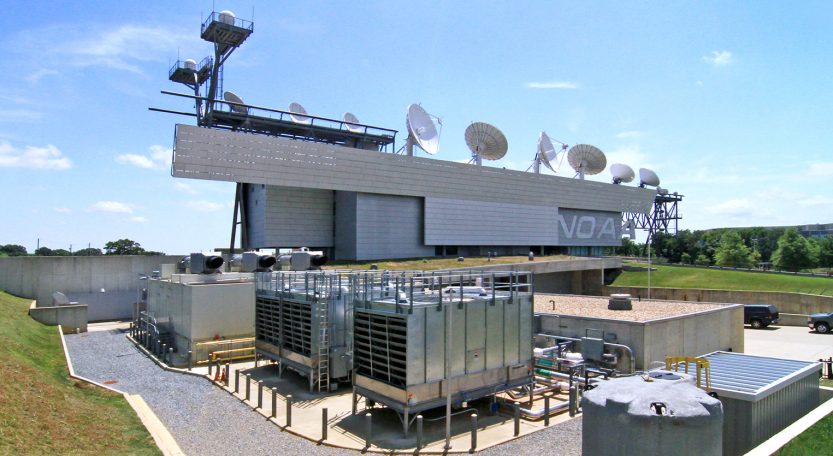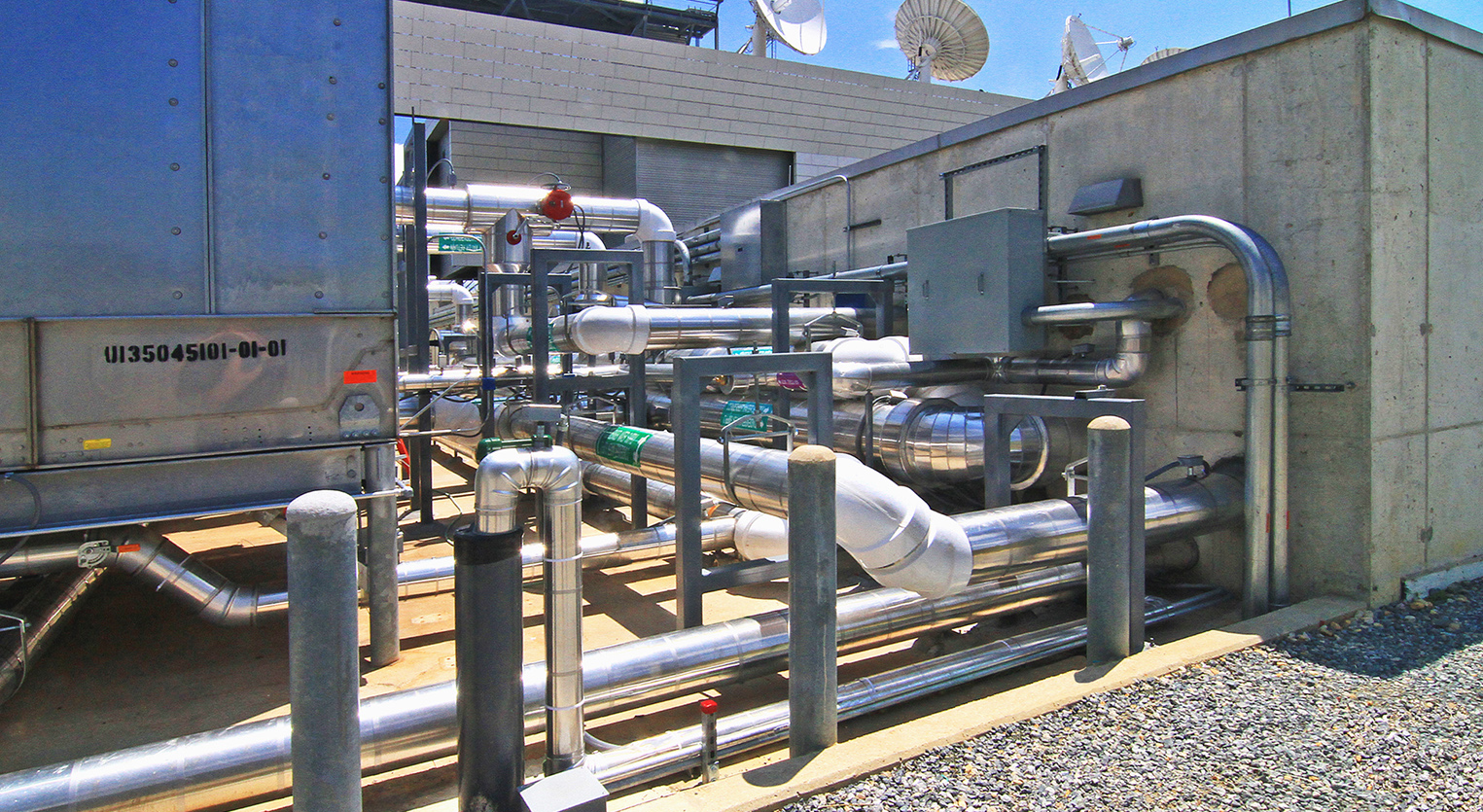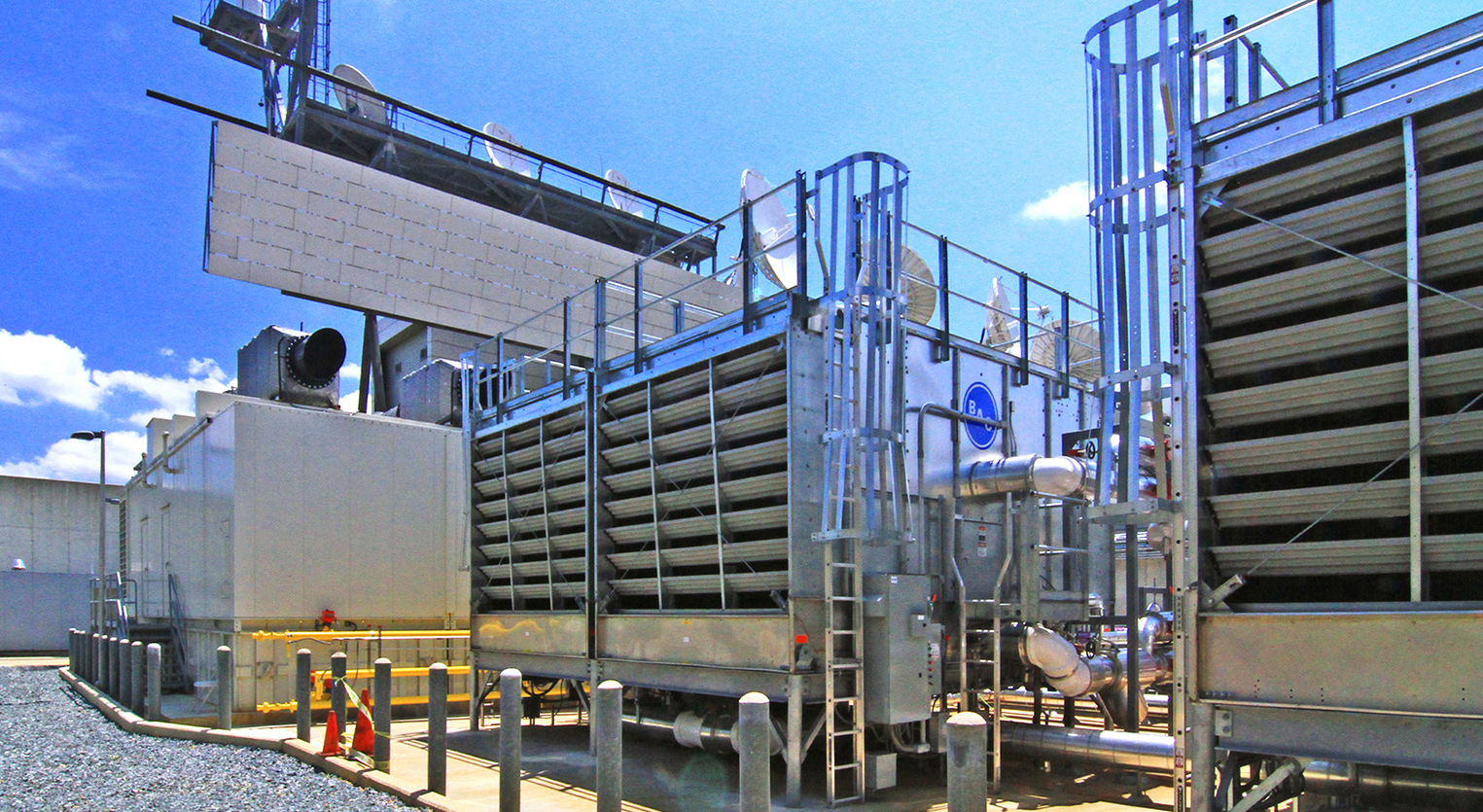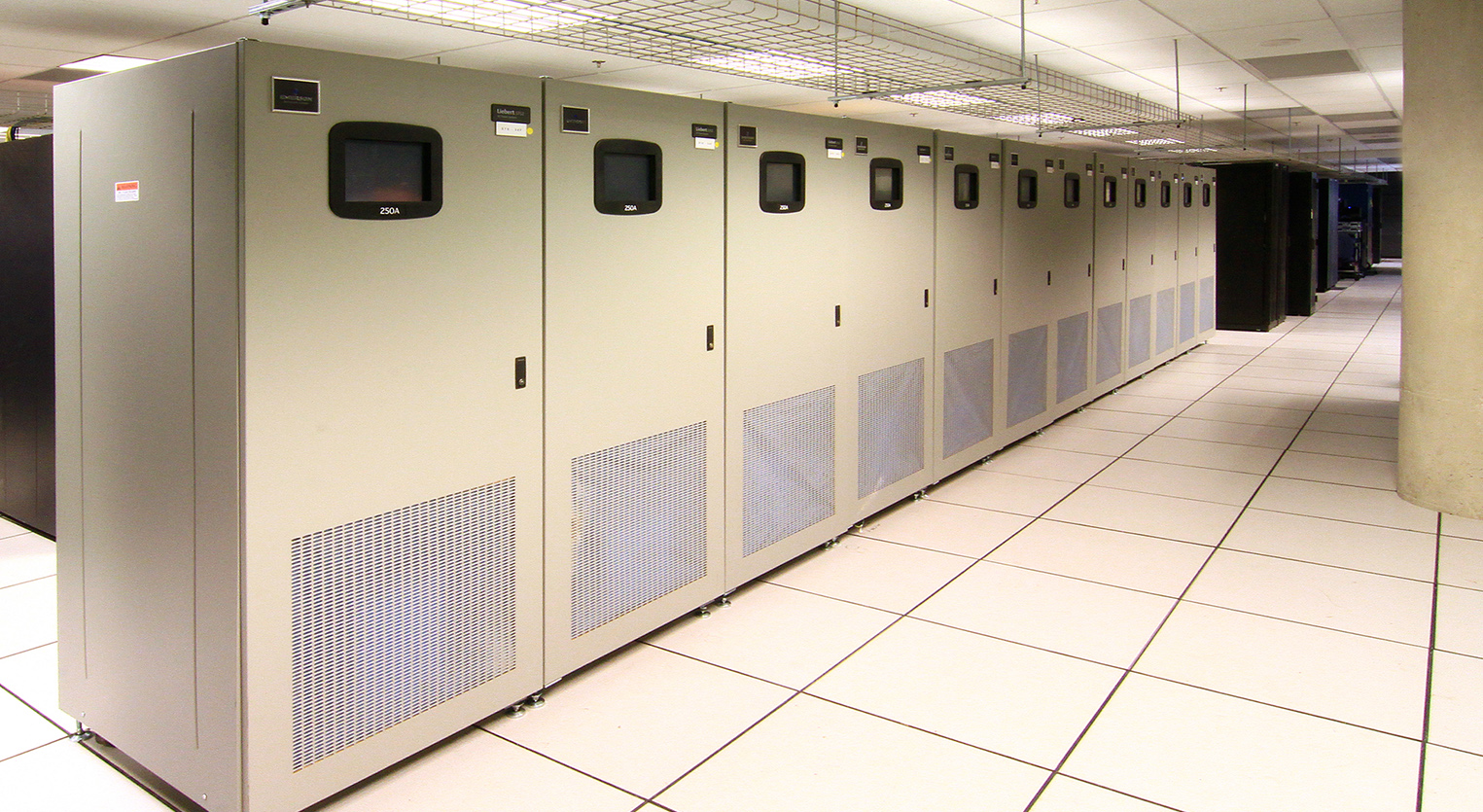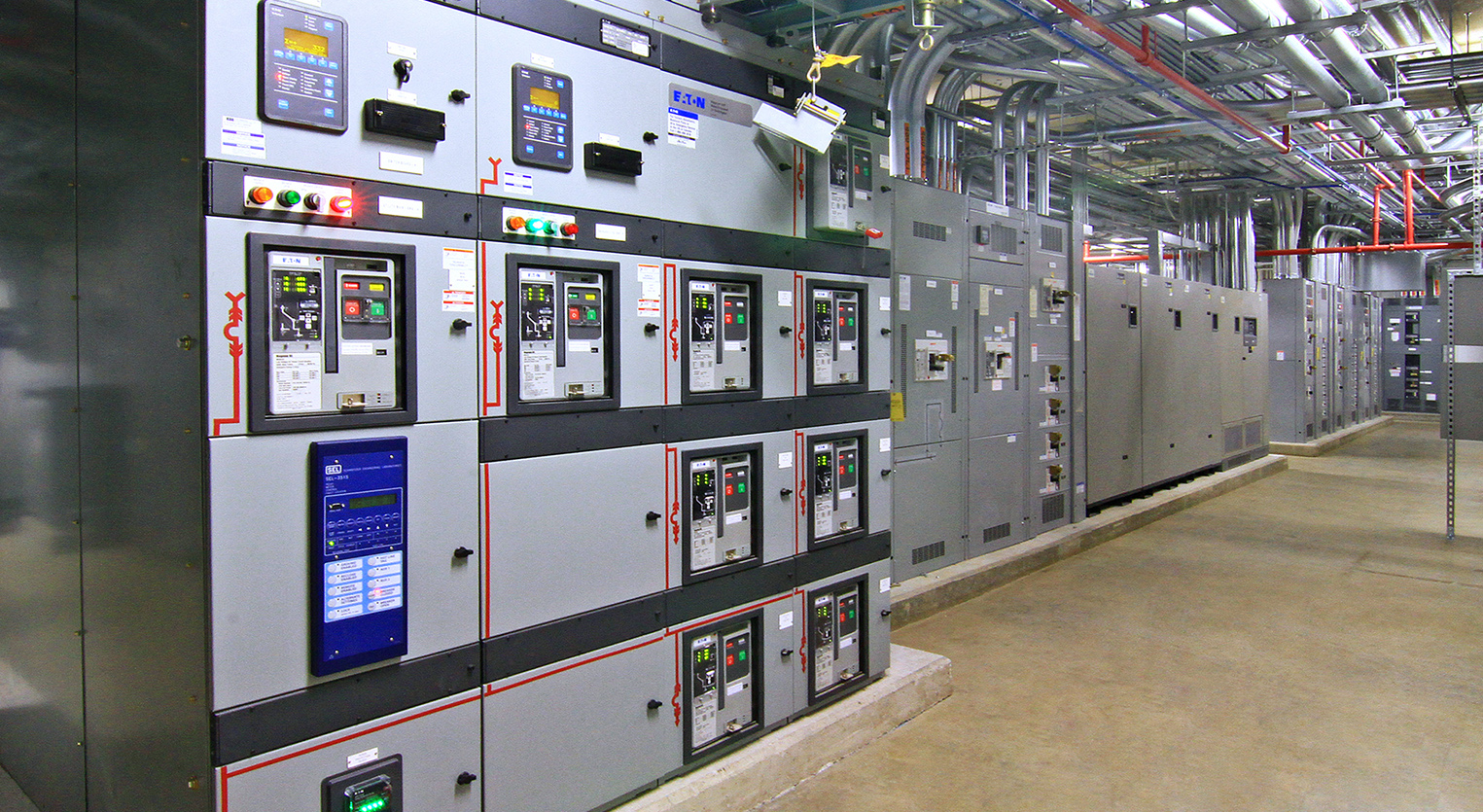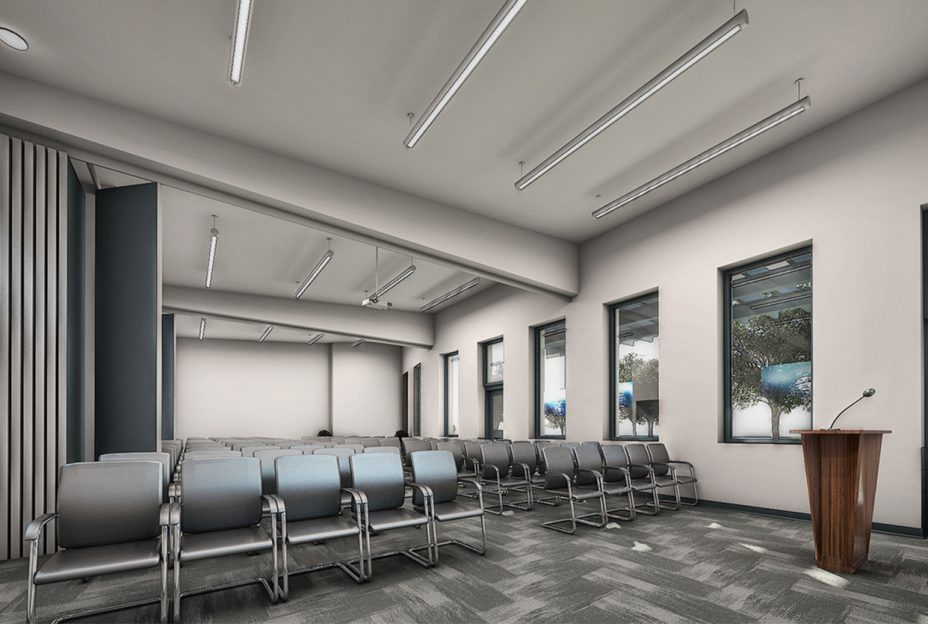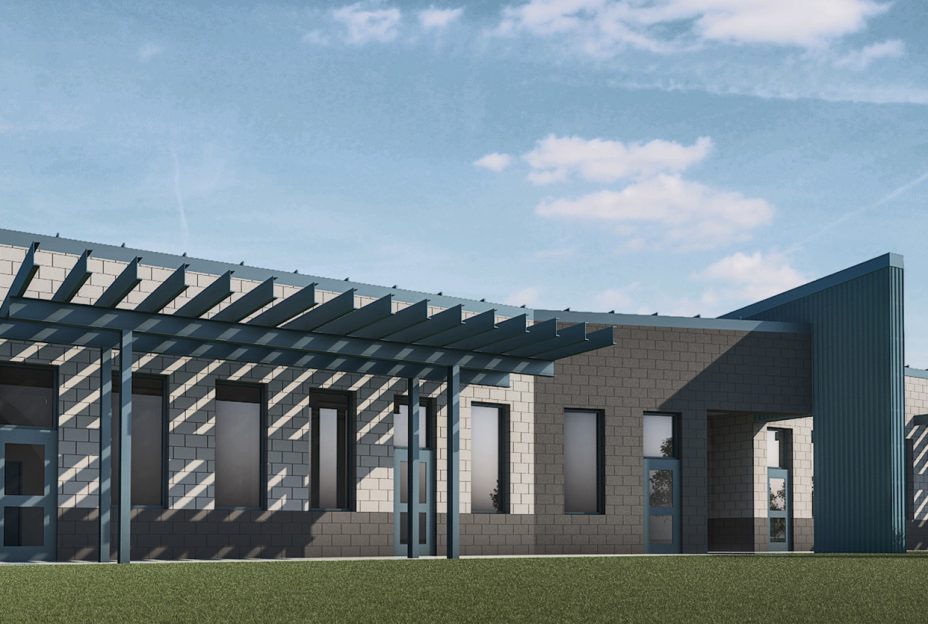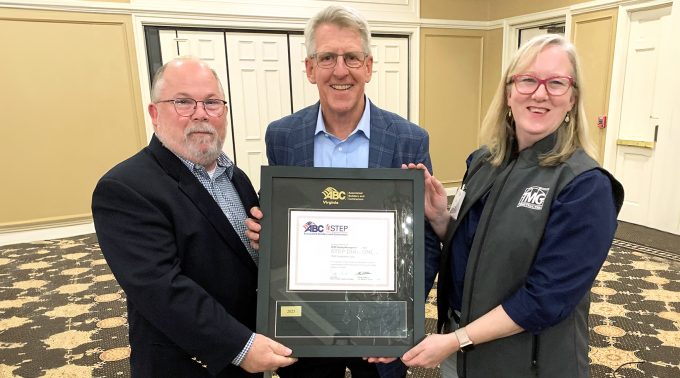TMG completed a mission-critical upgrade of the electrical and cooling infrastructure integral to IT computing power at the National Oceanic and Atmospheric Administration’s Satellite Operations Facility (NSOF) in Suitland, Maryland.
In addition to dramatically increasing the critical cooling, UPS and emergency power generation capacity, the scope of the project involved major reconfiguration of the interior layout of the third floor and the basement, which involved all of the building trades to create additional computer rooms and support spaces. The job site is located in an urban campus setting off heavily trafficked Suitland Parkway near Southeast Washington, DC.
The project was performed in two phases. Phase I allowed for an initial IT power increase of 1414kW, which was completed on schedule despite the impacts of a Government shutdown, weather delays, and design changes. Phase II involved the installation and tie-in of CRAC units, IRCs, an IT power increase of 2340kW and substantial Owner-driven change order work.

